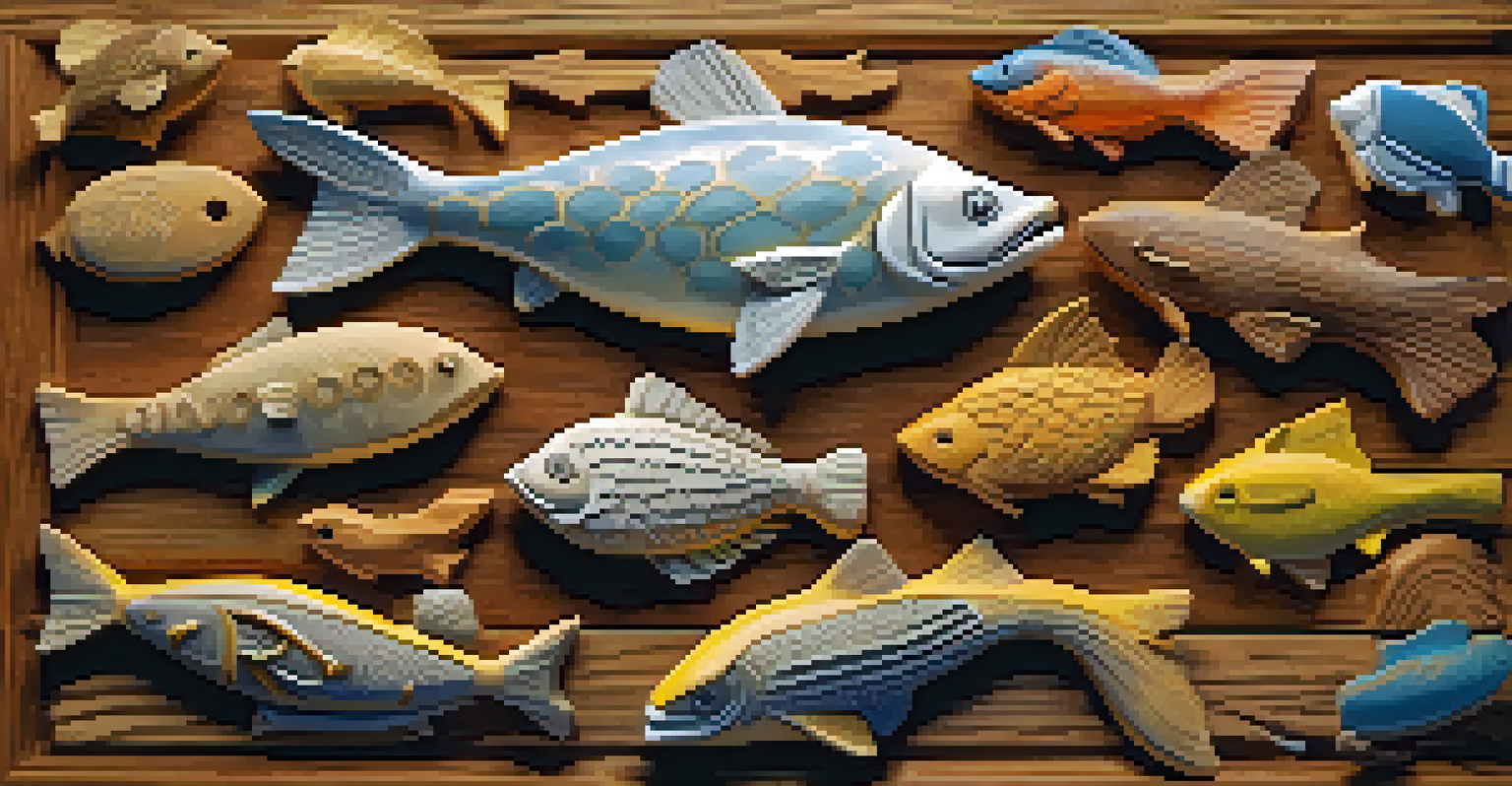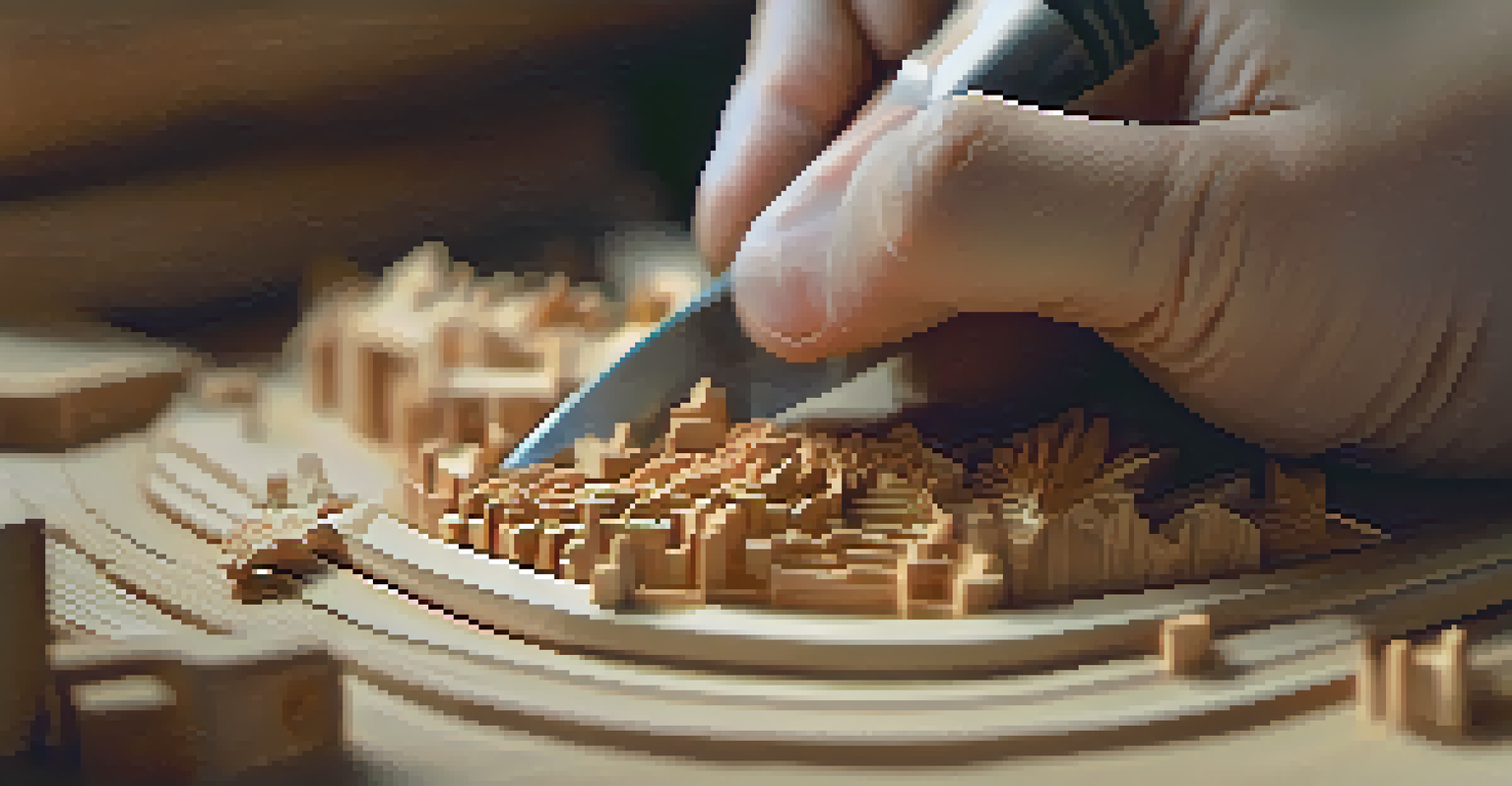Exploring the Basics of Animal Carving Techniques for Beginners

Introduction to Animal Carving: What You Need to Know
Animal carving is a fascinating art form that involves shaping materials like wood or stone into lifelike animal figures. For beginners, understanding the basics is essential to create beautiful pieces. This guide will introduce you to the fundamental techniques and tools you'll need to get started.
Art is the most beautiful of all lies.
Many people find animal carving to be not just a hobby, but a form of expression. It allows you to connect with nature while honing your artistic skills. Whether you want to carve a majestic eagle or a playful kitten, the journey begins with the basics.
As you dive into this world, remember that practice is key. Each carving you create will teach you something new, so embrace the learning process and enjoy the artistry involved in bringing animals to life.
Essential Tools for Beginner Animal Carvers
Before you start carving, it's crucial to gather the right tools. For beginners, a basic set usually includes a carving knife, chisels, and a mallet. These tools will help you shape your material effectively and with precision.

It's also beneficial to have safety gear, such as gloves and a protective apron, to ensure a safe carving experience. Remember, being cautious while handling sharp tools is just as important as knowing how to use them.
Essential Tools for Beginners
Gathering a basic set of carving tools like knives and chisels is crucial for anyone starting in animal carving.
As you progress, you may choose to invest in more specialized tools. However, starting simple allows you to focus on developing your techniques without overwhelming yourself with unnecessary equipment.
Choosing the Right Material for Your Carvings
Selecting the right material is a crucial step in the animal carving process. Beginners often start with soft woods like pine or basswood, which are easy to carve and forgiving for novice hands. These materials allow you to practice without the frustration of working with harder woods.
Every artist was first an amateur.
Alternatively, you can explore other materials such as soapstone or clay, which offer different textures and carving experiences. Each material has its unique qualities, so experimenting with various options can help you find your preferred medium.
As you gain confidence, you may want to try more challenging materials. However, starting with softer options is a great way to build your skills and understand the nuances of animal carving.
Basic Techniques Every Beginner Should Master
Understanding basic carving techniques is essential for creating realistic animal forms. Start with simple cuts, such as slicing and whittling, to shape your material gradually. These fundamental techniques will serve as the foundation for more complex carvings.
Another important technique is undercutting, which helps create depth and dimension in your carvings. This technique adds realism to your work by making certain features pop, such as tails or ears on an animal figure.
Choosing the Right Material
Beginners should start with soft woods or materials like soapstone to practice their carving skills effectively.
Lastly, learn about detailing, which involves adding fine lines and textures to your carving. This step gives your animal its character and individuality, transforming a simple shape into a lifelike representation.
Creating Your First Animal Carving: Step-by-Step
To begin your first carving, choose a simple animal silhouette, like a fish or a bird. Sketch the design on your material lightly so that you have a guide to follow as you carve. This initial outline will help you stay on track during the carving process.
Next, use your carving tools to remove excess material gradually. Start with larger cuts to establish the basic shape, then work your way to finer details. Take your time and enjoy the process; carving is as much about the journey as the finished piece.
Finally, once your carving is complete, consider sanding it down for a smooth finish. You can also paint or varnish your piece to add color and protect it from wear, giving your first animal carving a polished look.
Common Mistakes Beginners Make in Animal Carving
As with any craft, beginners often face common pitfalls in animal carving. One frequent mistake is rushing through the process, which can lead to uneven cuts and mistakes. Patience is key; take your time to develop your skills and enjoy the creative flow.
Another mistake is not using reference images. Having a clear image of the animal you're carving can guide your proportions and details. Use photos or sketches to help you visualize the final product and maintain accuracy.
Common Mistakes to Avoid
Patience, using reference images, and maintaining tools are key factors to prevent common pitfalls in animal carving.
Lastly, many beginners overlook the importance of tool maintenance. Dull tools can lead to frustration and poor results. Regularly sharpen your tools to ensure they perform well and make the carving process smoother and more enjoyable.
Resources and Community for Aspiring Animal Carvers
Connecting with fellow carvers can enhance your learning experience significantly. Look for local carving clubs or online communities where you can share your work, ask questions, and receive feedback. Engaging with others can provide valuable insights and inspiration.
Additionally, consider investing in books or online courses dedicated to animal carving. These resources often offer step-by-step tutorials and tips from experienced carvers, helping you refine your techniques and expand your skill set.

Lastly, don't hesitate to explore social media platforms where many artists showcase their work. Following skilled carvers can provide you with a steady stream of motivation and new ideas for your own projects.